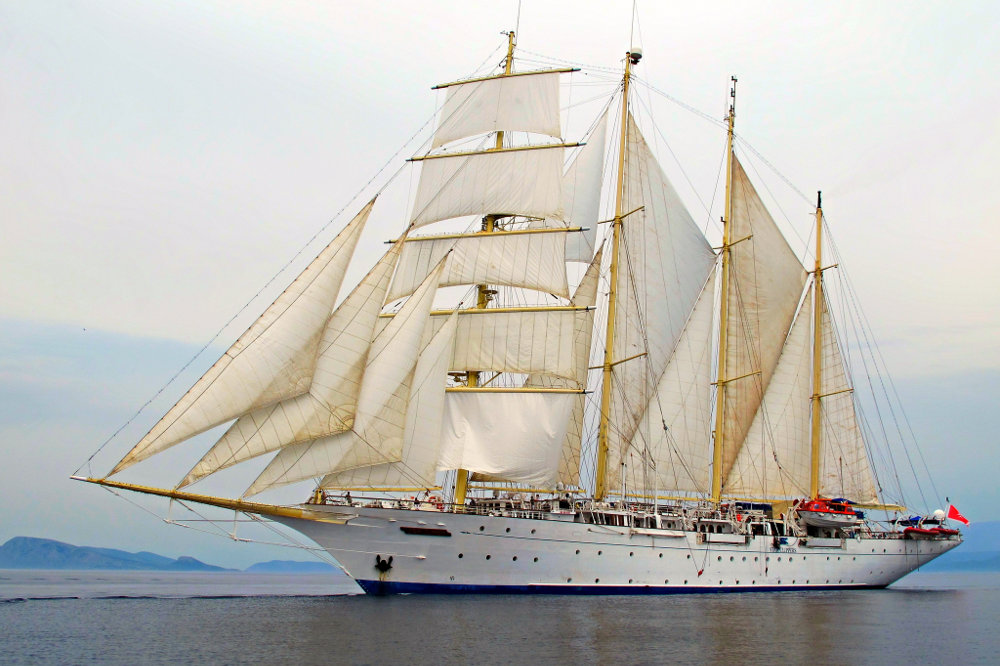
It was 235 feet longand weighed 1,783 tons, and the three 100-foot-plus masts carried an extraordinary 30,000 square feet of sails. The Flying Cloud was known as an “extreme clipper” because of its narrow, streamlined bow. Shaw writes in “Flying Cloud: The True Story of America’s Most Famous Clipper Ship and the Woman Who Guided Her,” it was made up of more than 1 million board feet of oak and held together with 50 tons of copper fittings and thousands of “treenails” made of locust, which swelled after being driven and created an ironclad bond. The Flying Cloud was designed and built by the Canadian-born Boston shipbuilder Donald McKay. But it also deserves to be known for an equally remarkable fact: Its navigator was a woman. This magnificent ship will forever be known for setting the record for the fastest voyage from New York to San Francisco. Of all the clipper ships, the most famous was the Flying Cloud. This week's question: What was the tallest and most celebrated skyscraper in San Francisco when it was built in 1897? See More Collapse In 1966, $15,000 in quarters alone was stolen by employees.

CLIPPER SHIPS INSTALL
Mint on Duboce Street belatedly do in 1967?Īnswer: Install metal detectors. “Clippers carried expensive items and previously unavailable perishables from the East,” James Delgado wrote in “To California by Sea: A Maritime History of the California Gold Rush.” “The speed and relatively predictable nature of clipper arrivals led to the beginning of regular supply-and-demand trade with California.” The clippers shortened the time to get from New York to California from 200 days to less than half that.Ĭlippers carried a few passengers, but they mostly carried high-value freight. But the discovery of gold in California, and the profits to be made by shipping cargos there as speedily as possible, spurred an unprecedented boom in clipper construction. They were initially developed in response to the China trade. Everything about them was built for speed, from their sleek and streamlined hulls to their extra-large sail areas. But while they did, they represented the pinnacle of the sail-driven vessel in history.Ĭlipper ships were the greyhounds of the seas. The journey between Africa and the Americas “The Middle Passage ” could take four to six weeks but the average lasted between two and three months.These fine-lined, graceful wooden ships with their billowing masses of sail ruled the seas for only a short time. How long did it take to sail from Africa to America? Eventually steam-powered ships proved to be more dependable and quicker than any wind-powered craft. They were replaced by square riggers which were slower but could carry larger loads.

The construction of canals around the globe shortened most sea trade routes and virtually eliminated the need for the swift clippers.

CLIPPER SHIPS FULL
With an average distance of approximately 3 000 miles this equates to a range of about 100 to 140 miles per day or an average speed over the ground of about 4 to 6 knots.Ĭlipper has been building our current range in our proven Chinese shipyard in Ningbo China for over 15 years and most importantly invests in employing our own experienced Western boat builders full time overseeing new product development and final quality control. They were named as such as they were intended to clip over the waves rather than simply plough through them. … The first vessels to which the term “clipper” was applied were the Baltimore Clippers. It is thought the term “clipper” is most likely derived from the verb “clip” meaning to run or fly swiftly. However keep in mind that dropping or hitting the blades can knock them out of alignment and could result in nicking the skin. However under normal operation Wahl clipper and trimmer blades set at the factory should not cut the skin. A vessel of three or more masts fore and aft rigged on the aftermost mast and square-rigged on all others. This generally refers to large sea-going vessels under sail or power.


 0 kommentar(er)
0 kommentar(er)
